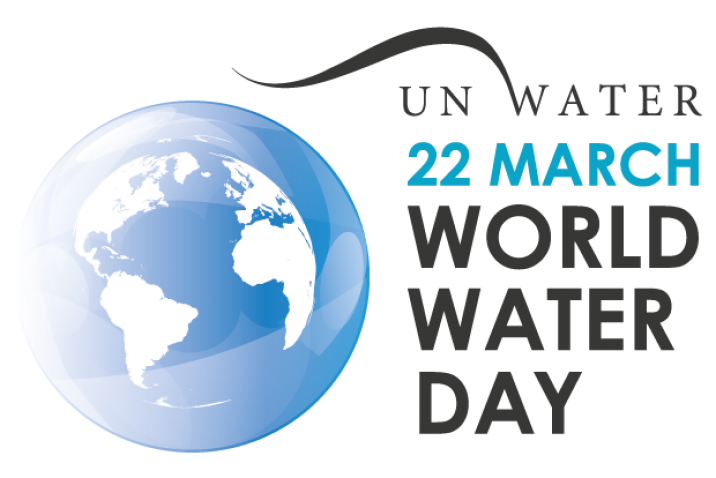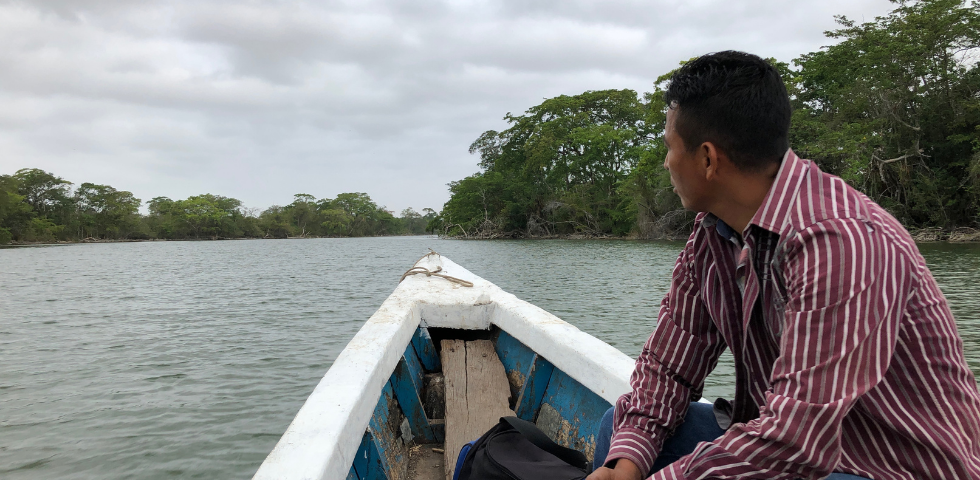
“The human environment and the natural environment are degraded together”
(LS 48)
As human beings, our very existence depends on the planet we inhabit, where everything is connected and integrated into one single community of life. For this reason, what we do to creation directly affects humanity itself. In this sense, the forced migration of people is related to the deterioration of our common home.
The “Environmental Migrant” and Climate Change
In 2007 the United Nations Framework Convention on Climate Change defined the term “environmental migrant,” and stated that one of the causes of forced migration is the deterioration of the planet, which becomes apparent in climate change and water stress. The crisis that we are experiencing in relation to the availability, access and quality of water is a situation that affects the earth’s population. This is especially true for the great majority who are impoverished by the inequality and inequity generated by the current system of the market economy that seeks the accumulation of wealth in the hands of the elites that dominate the political, economic and social spheres.
Water Stress and Agriculture
In the VIII World Water Forum, it was noted that “two thirds of the world’s population live in conditions of severe water shortage at least part of the year.” In addition, water is of the utmost importance for agriculture, as it uses 70% of available fresh water. In this sense, it becomes urgent to review the development and production models that big capital promotes. Among these models are extractivist companies that, in addition to destroying biodiversity, ecosystems and polluting water, cause forced displacement of local populations.
Water Stress, Extractivism and Violence
Extractivism is generating social conflicts, division within communities, and family disintegration, and trigger violence between local communities and the extractivist actors. The its report, the organization Global Witness highlights that, “More than three people were murdered every week during 2018.”[1] In Central America, Guatemala and Honduras are the countries where the most environmental defenders have been assassinated. In the case of Honduras, the 2017 report from Global Witness defines it as the most dangerous country in the world for defenders of creation[2]. This conflict situation generates internal forced displacement and migration to other countries, where people seek refuge and protection, due to the high level of state impunity of these countries.
Water Stress, Drought and Hurricanes
Another causal aspect of water stress is drought. In the case of Central America, territories that experience drought are called the “dry corridor.” This situation becomes more dramatic due to the expansion of monocultures, and the so-called “Economic Development Zones” that are based on the private, extractivist model. Add another human drama, natural phenomena such as hurricanes or tropical storms, and we see a population devoid of the kind of governmental and institutional management that is necessary and capable of responding with a preventive dynamic. This was evidenced in the Central American region during hurricanes “Eta and Iota” (2020), which in the case of Honduras again triggered the formation of “caravans” (2021) of forced migration, and demonstrates how human deterioration is linked to the environment.[3].
Water Stress and Nutrition
The water crisis shows the integration that humans have with creation. A whole chain reaction arises when a population is mobilized and then reaches other territories where biodiversity and available water are already under stress. Also, another aspect to take into account is that the water crisis directly affects food quality, causing further deterioration in the quality of life, mainly in poor households.
Migration Figures
The migratory phenomenon has been increasing worldwide, including in Central American countries. “According to estimates by the World Bank and the United Nations, already in 1990 a volume of one million emigrants was reached, which increased to 2.2 million in 2005 to reach 3.1 million in 2015.” [4] This human drama is linked to the socio-economic and socio-environmental situation of the sending countries. With the current situation of the pandemic, migrating is complicated as a result of the public health crisis in all countries, both transit and destination.
Sister Water and Sister Mother Earth
Francis of Assisi showed us ways of living in community with creation. By calling her “Sister Water,” he treats her with reverence and gratitude for the life she generates; Likewise, he called this common house, “Sister Mother Earth,” knowing that we depend on her for food for our daily sustenance. We must return to the relational proposal of brother Francis, who leads the human to experience themself as a creature with other creatures, being brother and sister in this community of life, where creational dignity makes us equal and dependent on the path of life. If we treat creation in all its biodiversity as an enemy, forced migration will increase and the repercussions will fall on the quality of life of all of humanity.
René Arturo Flores, OFM
RFM-El Salvador
[1] Enemies of the state? (2019, July 30). Globalwitness. https://www.globalwitness.org/en/campaigns/environmental-activists/enemigos-del-estado/
[2] Honduras: the most dangerous country in the world for environmental activism. (2021, January 31). Globalwitness. https://www.globalwitness.org/en/campaigns/environmental-activists/honduras-el-pa%C3%ADs-m%C3%A1s-peligroso-del-mundo-para-el-activismo-ambiental/
[3]Radio Progreso. (2021, January 15). Migrant Caravan 2021 [Video]. Radioprogresohn.net. https://radioprogresohn.net/caravana-de-migrantes-2021/
[4] Alejandro I. Canales, Juan Alberto Fuentes and Carmen Rosa de León Escribano, Development and migration: challenges and opportunities in the countries of northern Central America (LC / MEX / TS.2019 / 7), Mexico City, Economic Commission for Latin America and the Caribbean (ECLAC), 2019.

